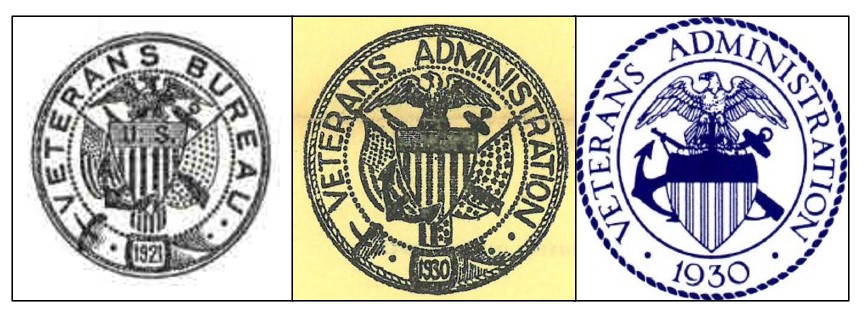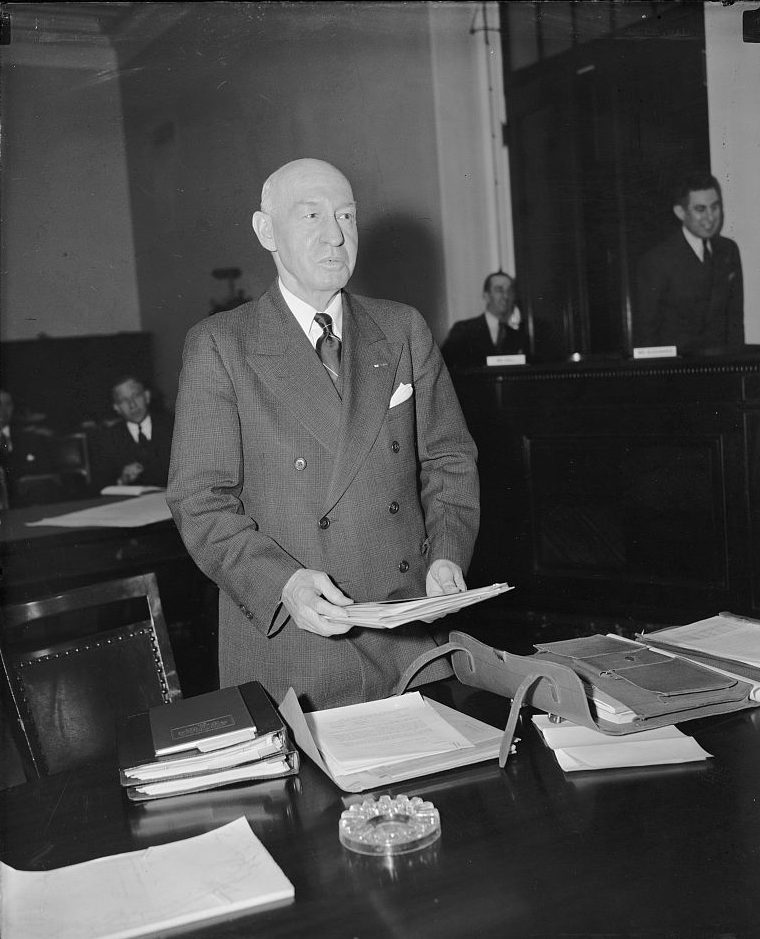
On July 21, 1930, President Herbert C. Hoover signed Executive Order 5398 establishing the Veterans’ Administration (VA), the forerunner of today’s Department of Veterans Affairs. Hoover’s order consolidated three separate government organizations serving Veterans: the National Home for Disabled Volunteer Soldiers, the Bureau of Pensions, and the Veterans’ Bureau. For the first time in the nation’s history, a single, independent federal agency became responsible for managing benefits and medical services for Veterans of all wars.
The merger came on the heels of a 1921 executive order that combined the programs for World War I Veterans into the Veterans’ Bureau. Two elements of the now defunct Veterans’ Bureau became integral parts of the new Veterans’ Administration: its director, Brig. Gen. Frank T. Hines, and its seal.
Hines became head of the Veterans’ Bureau in 1923, replacing its scandal-plagued first director, Charles R. Forbes, who resigned under duress. He earned high marks for restoring the bureau’s reputation and overseeing the expansion of its network of Veterans’ hospitals. When the time came to appoint someone to run the newly established Veterans’ Administration, Hoover did not hesitate to select Hines. He was sworn in on July 23, 1930, as the agency’s first Administrator of Veterans Affairs. Hines remained in that position for the next fifteen years, a period of continuous service unmatched by any of his successors.
One of his earlier, if largely ceremonial, acts as Administrator was to approve a modified version of the Veterans’ Bureau seal for VA use. Designed by Chief Clerk William C. Black and drawn by Nancy P. Davis, the VA seal retained most of the elements of the bureau’s seal. The outer portion of the circular seal kept the word “VETERANS” and replaced “BUREAU” with “ADMINISTRATION” in a belt motif with the buckle at bottom containing the year of the VA’s creation, 1930. While the letters “U.S.” were removed from the bar atop the shield in the inner circular section, an eagle symbolizing American strength and freedom still stands with wings outstretched above the shield with thirteen vertical stripes, representing the first thirteen colonies. Draped on either side of the shield are the U.S. flag and the Union Jack. Crossed behind the shield are a rifle and anchor, signifying the military and naval services, with the bottom of the anchor slightly overlapping the bottom left of the shield.
This version of the VA seal is referenced in a letter dated July 26, 1935, from Administrator Hines to Henry S. Ashurst, Chairman, Senate Committee on the Judiciary supporting the draft bill, “Official Seal for the United States Veterans’ Administration.” This law would entitle the seal to “judicial cognizance,” providing the statutory authority needed “in certifying and authorizing any records of the Administration for production in court or elsewhere, where certification or authentication of such records is deemed essential.” The bill passed on January 31, 1936.
In 1946, the year after Hines’ retirement, the design of the VA seal was modified to remove the flags. The belt motif was also removed and the anchor repositioned. This version continued to be used until the Veterans’ Administration was elevated to cabinet-level status in October 1988 and became the Department of Veterans Affairs, effective March 15, 1989. The department scrapped the old seal and adopted a new one based on the design submitted by David Gregory, an employee at the Indianapolis VA Medical Center.
By Barbara Matos
Executive Assistant, Office of Procurement Policy, Systems and Oversight
Share this story
Related Stories

History of VA in 100 Objects
Object 96: Postcard of Veterans Vocational School
In 1918, the government created the first nationwide vocational training system to help disabled Veterans acquire new occupational skills and find meaningful work. Over the next 10 years, more than 100,000 Veterans completed training programs in every field from agriculture and manufacturing to business and photography.

History of VA in 100 Objects
Object 95: 1840 Census of Pensioners
In a first, the 1840 census collected data on Veterans and widows receiving a pension from the federal government. The government published its findings in a stand-alone volume titled “A Census of Pensioners for Revolutionary or Military Services.”

History of VA in 100 Objects
Object 94: Southern Branch of the National Home
The Southern Branch of the National Home for Disabled Volunteer Soldiers opened in Hampton, Virginia, in late 1870. The circumstances surrounding the purchase of the property, however, prompted an investigation into the first president of the National Home’s Board of Managers, Benjamin Butler.



